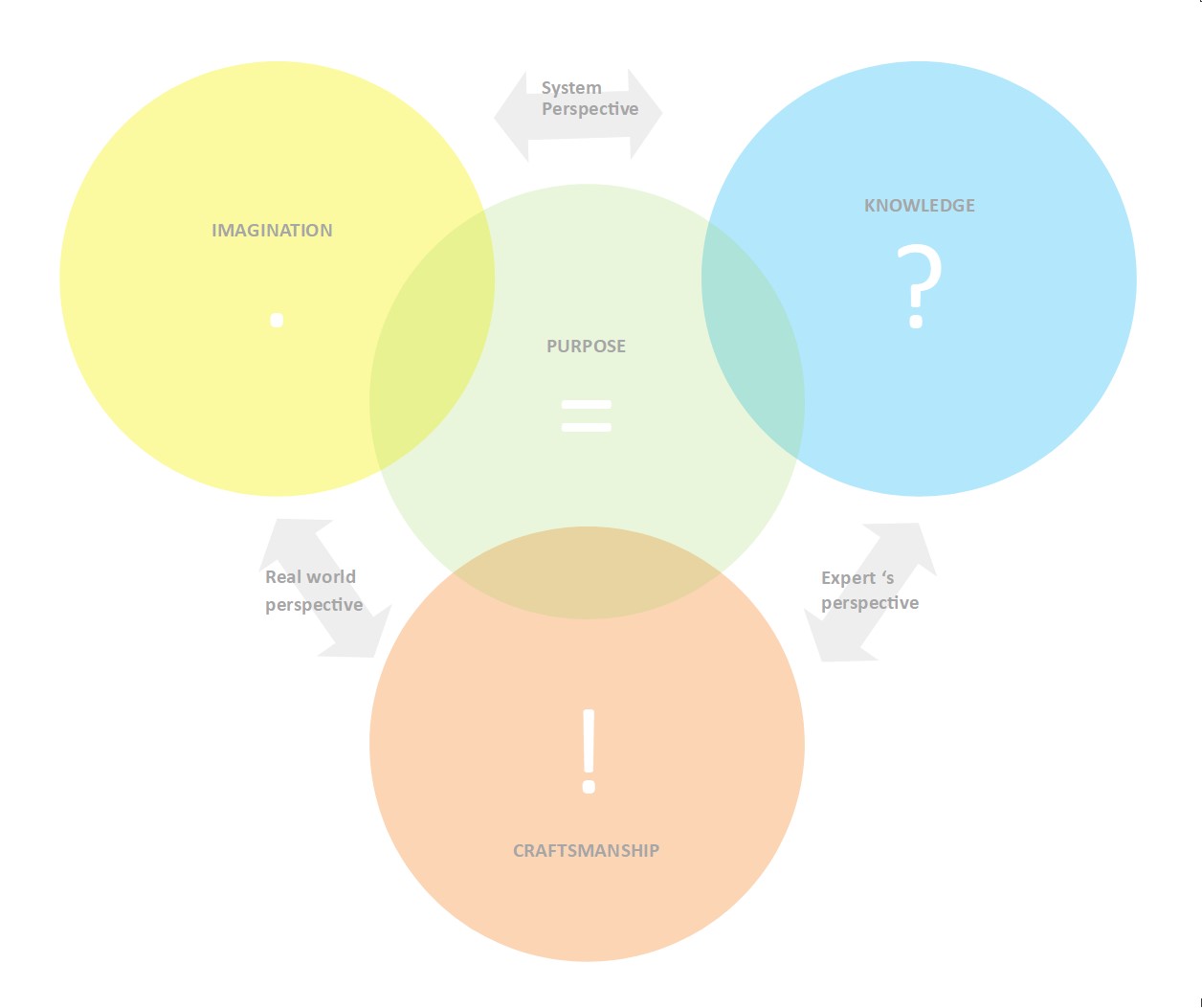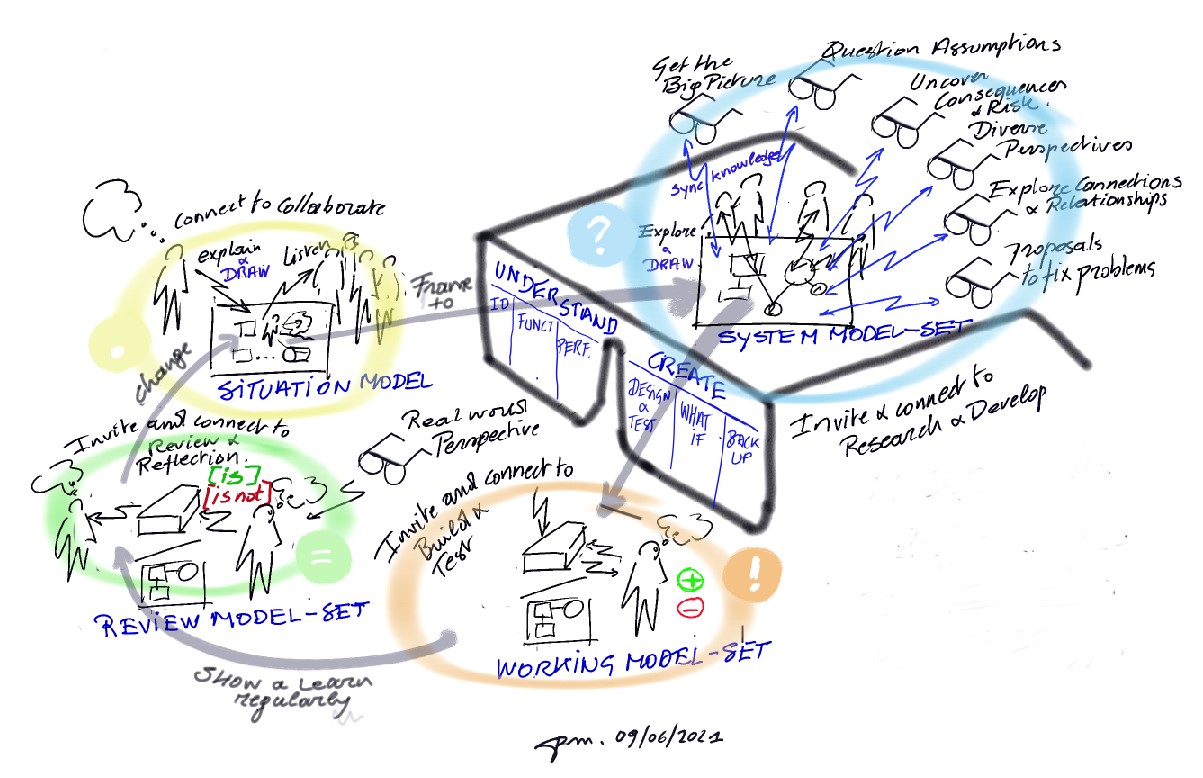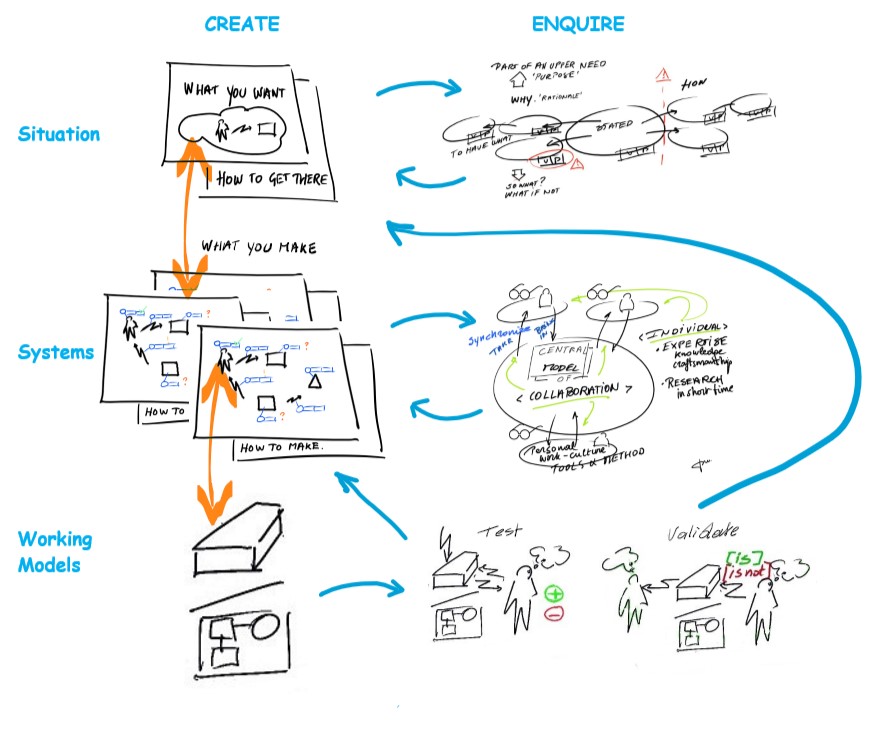Visioning-Development-Planning is not just another methodology; it is a collaborative systems design approach that serves as the driving force behind successful development of products and systems.
At its core, Visioning-Development-Planning acts as a visual anchor, providing a tangible framework for each build-up cycle.

It serves as a guide for professionals, enabling them to navigate through all aspects of the design process efficiently. Participants can anticipate their contributions to the creation process, and individuals can manage themselves and each other flexibly.
Moreover, Visioning-Development-Planning establishes a strong connection between people and their work, cultivating a culture of trust and collaboration within a learning environment. It assists leaders and teams to orchestrate all elements of product and systems development simultaneously. By connecting people to the workflow and anchoring methods and tools, it enables individuals to leverage their own expertise and methods effectively.

One of the remarkable aspects of Visioning-Development-Planning is its flexibility in accommodating various starting points in the design stage. It doesn’t matter at what stage you start; the method ensures that every thought and action falls into the right context from idea inception to production.
One of the notable advantages of Visioning-Development-Planning is its agility to foster open-minded conversations, resulting in concise and essential documentation. It is crucial to postpone our direct critical attitude and first give space for constructive creation. Only after this stage should we devote time to critically examining the work. This approach prioritizes encourages visioning and craftsmanship as the foundation for creation, going beyond mere reliance on existing knowledge. It fascinates people, igniting their curiosity and challenging them to actively participate in the development process.

By visualizing situations from a systems perspective and creating models with associated properties, Visioning-Development-Planning makes complex concepts understandable and tangible. It streamlines continuous development, fostering a smooth flow and eliminating unnecessary complexity. This method cuts through the clutter, allowing professionals to focus on what truly matters.
Visioning-Development-Planning empowers professionals to work at their best, shielding them from the frustrations imposed by external pressures. It highlights the importance of responsibility of each professional to deal with all aspects of development seriously.
Visioning-Development-Planning is a collaborative systems design approach that drives product and system development. It guides professionals through all stages of design and connects people to the work. By navigating through vision, craftsmanship, knowledge and reflection, this approach makes development tangible and manageable, resulting in great results.
Looking at the future of system creation, the visual base anchor of Visioning-Development-Planning is ready to stand the test of time. The passage frames and stages of the symbol can be filled in with new frames, yet the underlying principles remain constant. This inherent flexibility ensures that Visioning-Development-Planning, regardless of the specific approach, remains a solid foundation for system design. As the landscape of system creation continues to evolve, Visioning-Development-Planning will serve as a guiding light. Its core principles of visualization, continuous development, and emphasis on collaboration will continue to be relevant and applicable. By embracing this approach, we can pave the way for innovation, adaptability, and success in the creation of systems for years to come.
Related posts:
Visioning Development Planning: a collaborative systems design approach.
How to connect people into a project. Visioning-Development-Planning for core team professionals.
The ‘Design and Engineering framework’ as a mental model in a context of integrated product development.
Training: [https://www.patrikmarien.be/use-my-expertise/#training-visdefplan]
